TERRY SHERWOOD looks at the UK Dan Curtis TV movie production of Bram Stoker’s Dracula 1974.
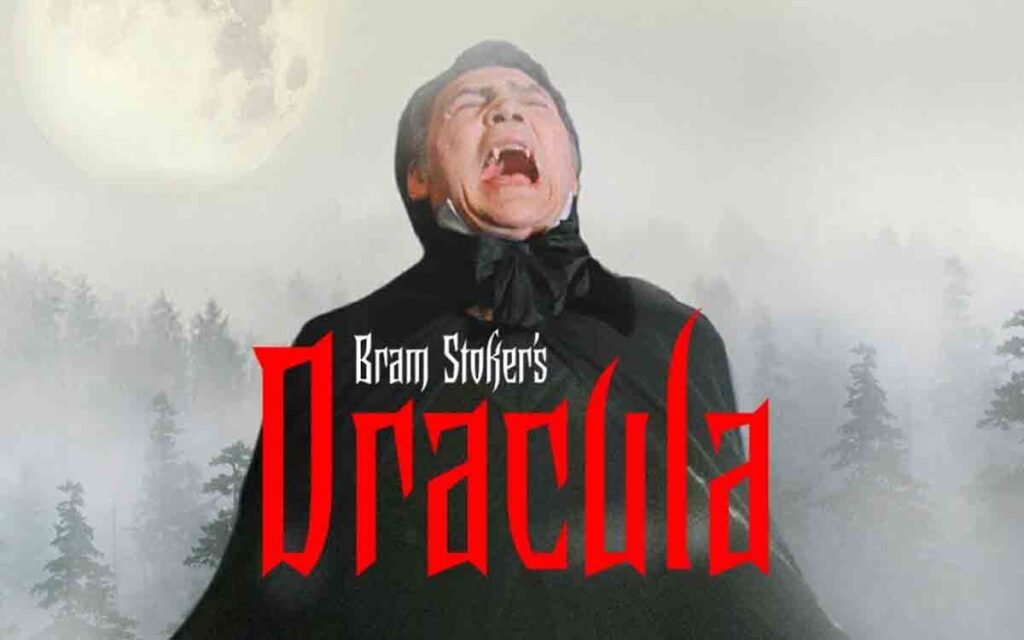
TITLE: Bram Stoker’s Dracula, aka Dan Curtis’ Dracula
RELEASED: 1974
DIRECTOR: Dan Curtis
CAST: Jack Palance, Simon Ward, Nigel Davenport, Pamela Brown, Fiona Lewis, Penelope Homer
The character of Dracula is similar to Hamlet: it is interpreted for many ages.
In Bram Stoker’s Dracula 1974, American director Dan Curtis wanted to try and recapture the success of his earlier television film, The Strange Case of Dr. Jekyll and Mr. Hyde (1968) with Jack Palance.
Like the folkloric vampire that can turn itself into mist to get through a keyhole, when pursuers try to capture the monster, they fail miserably as they grab at nothing.
Unfortunately, this is an interpretation of Dracula that misses the point, literally, visually and figuratively, like those trying to stop the metamorphized undead.
Also known as Bram Stoker’s Dracula and Dan Curtis’s Dracula, this British made version is the most un-Gothic of Gothic films I have watched.
The film was released in two versions; one for American television and the other for Europe containing more gore.
The characters in the story are simple shadows saying words without sincerity or belief in a fantastic situation.
The script was written surprisingly ineptly by veteran Richard Matheson, who is responsible for many classic stories and adaptations.
First and foremost, Matheson and Curtis offer the ridiculous premise that Dracula is a besotted lover, who is obsessed with a lost female love that he finds in some unsuspecting female of the current age.
The inept idea was later propagated by that abhorrent Francis Ford Coppola abomination of money, excess and out of place visual trash.
Who let the dogs out?
Dan Curtis’s version opens up with the howl of wolves and a stampede of dogs in a forest path and up to a castle.
One watches and realizes that the animals are clearly German shepherds and this vaguely resembles the running of the bulls in Spain. Not a promising start.
One of the good points is that the story begins in “Bistritz, Hungary, May 1897.” Jonathan Harker, as we all know, is on his way to Castle Dracula to conduct business.
Harker, played by Murray Brown, is an older looking fellow than in past versions. He has the proper English manners (or what American writers think English manners looked like then), yet lacks the boyish charm, naiveté and look of an adventurer in a strange land. Harker, like most of the characters, is colorless.
The locals in Transylvania seem afraid when they learn where he is going. The journey to the castle as shown in the film is quite effective in scope and the way it is shot.
The story omits the receiving of a blanket and the flask of plum brandy for the journey as well as the ghostly blue flames into which the coach driver steps, revealing his spirit-like appearance to the shocked Harker.
Harker gets to the castle. It seems smaller inside that in other versions, undoubtedly due to budget. Perhaps this Dracula is not as prosperous? The interiors, for the good of the show, were shot in actual castle interiors, and exteriors in the former Yugoslavia and not film sets.
Here we come face to face with Jack Palance’s version of the Count.
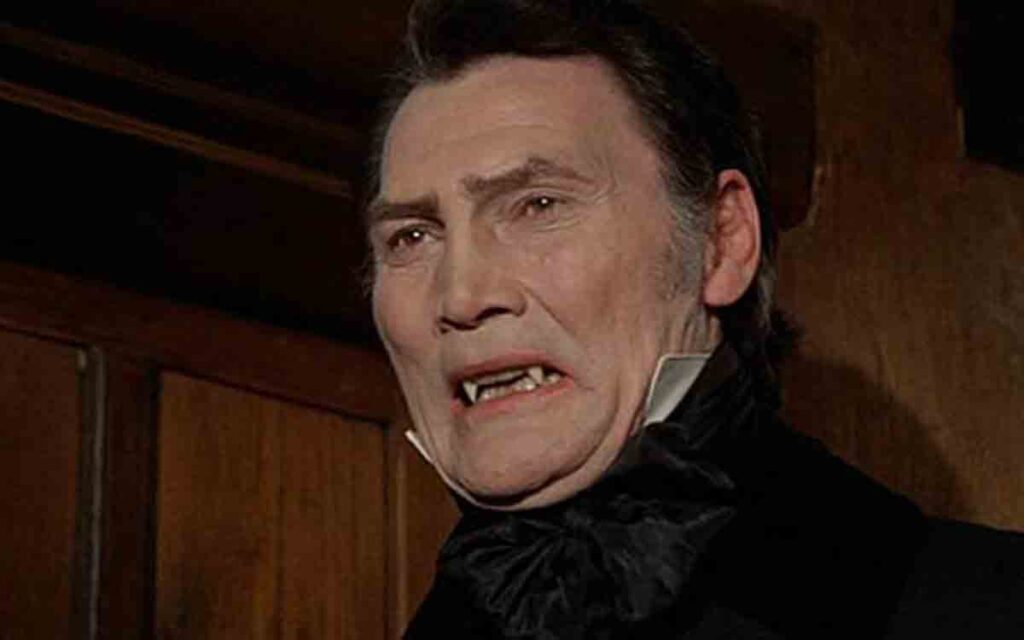
The Haunted Palance
In any Dracula story, the Count portrayal is crucial to its success. Does the Dracula command the screen, regardless of being on or off?
Essentially, as in the book, Dracula is off screen and the story becomes about those caught up in his deeds.
In the book and some films, Dracula makes brief appearances but his control and manipulation of people must always be present.
Jack Palance gives it a brave try but he is saddled with cliché wardrobe and dialogue that is often delivered in one note style, as per the actor’s natural voice.
Palance breathes through lines, somewhat like Frank Langella later did, with a more modulated tone.
Langella gets away with that tone because he has a stage trained voice while Palance does not succeed.
Palance’s Dracula is impatient to get things done as he demands he be shown photographs of properties that Harker’s firm has chosen for him.
Dracula reacts very strongly to a photograph of Harker’s fiancée Mina and her best friend Lucy. It is reminiscent of Christopher Lee politely intoning “Charming” as he puts the photograph down. The deaths happen, the punch-ups with Gypsies, the cut with the razor when shaving causing Palance to appear oddly orgasmic. Harker ends up being tossed to the vampire women in the crypt.
The scene shifts to The Demeter. It runs aground, carrying only Dracula and the dead captain lashed to the wheel. Soon after, Lucy (Fiona Lewis) begins to fall ill.
Her fiancé, Arthur Holmwood, (Simon Ward) is perplexed and calls in Dr Van Helsing (Nigel Davenport). What’s missing? Important elements of the story such as Holmwood being Lord Godalming, who uses his money and influence to track Dracula.
There is no Sanatorium run by Dr Seward or Renfield character, and American suitor Quincy Morris is absent. Simon Ward, who should have been Harker, says so much poor dialogue that one wonders if he is actually the village idiot.
If you could see with my eyes and know what I know
Nigel Davenport simply does not have the physical stature or the actor’s chops to take on Palance.
Palance’s Dracula is weak in mind and evilness. The bar is low.
Davenport’s Van Helsing would be more at home with being autocratic General Spielsdorf (Peter Cushing) in Hammer’s The Vampire Lovers (1970). The actor blazes through dialogue of the most basic nature without chractersation or any hint that a great battle is underway. Simon Ward asks the basic questions, nods his head and looks pained and bewildered.
Dumb dialogue ruins story points, such as when the vampire Lucy is imploring Holmwood to let her in even though she has been placed in her crypt. Holmwood lets her in, only (of course) to be attacked and saved by Van Helsing. Lucy runs away and Van Helsing says the great pronouncement, “That was not Lucy. That was a Vampire”.
The film continues with the reveal of a portrait image of Dracula and a one similar to Lucy (hence the Count’s need for her as his bride).
Holmwood and Van Helsing ride to central Europe on horses without a change in under a day to meet the Count at his Castle. The ending has shots similar to Horror of Dracula’s (1958) conclusion. The similarity ends there.
Kiss of the Vampire?
Dan Curtis’s Bram Stoker’s Dracula 1974 is filled with missed opportunities in the script and on screen. Was this a fault of a poor screenplay being cut? Budget? Ultimately, it smacks of a “Let’s just get this done” attitude.
The romantic angle put on by filmmakers continued with that abysmal Coppola version.
In the book, when Dracula refers to Mina as “my little wine press”, when drinking her blood or saying to the men “that he will destroy you through them” (meaning the women in their lives) is hardly a romantic pronouncement.
The Frank Langella/Universal Studios version is acceptable because it used Gothic themes and is based on a Broadway production, not a classic novel.
Dan Curtis’s Dracula is for the completist or if you don’t know the story.
The previous Palance/Dan Curtis collaboration of The Strange Case of Dr Jekyll and Mr Hyde 1968 was a better production.
Tell us your thoughts on Dan Curtis’ Dracula 1974 in the comments below!



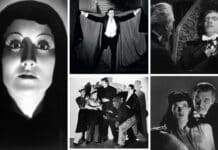
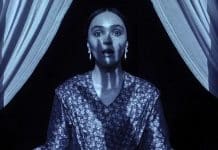
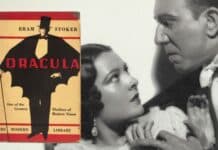

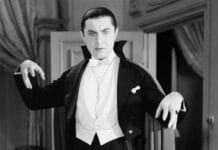
I agree with all you say , but would go further , and say that whoever was the period clothes buyer / dresser didn’t know / didn’t care much about accuracy ! Dracula was written and set in 1897 , yet several actors in ANY scene , wear clothes from ANY year spanning the whole of the 19th Century , when clothes styles were evolving rapidly .
Very poor .